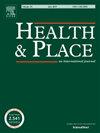Modeling the spatiotemporal transmission of COVID-19 epidemic by coupling the heterogeneous impact of detection rates: A case study in Hong Kong
IF 3.8
2区 医学
Q1 PUBLIC, ENVIRONMENTAL & OCCUPATIONAL HEALTH
引用次数: 0
Abstract
During the COVID-19 epidemic, many infections may have been undiagnosed in communities (hidden cases) due to low detection rates, thus exacerbating the overall prevalence of the epidemic. However, the heterogeneity of detection rates poses a challenge in simulating the proportion and spatial distribution of hidden cases. Coupling the heterogeneous impact of detection rates to extend epidemic modeling is necessary for forecasting the health burden and mitigating the inequity of testing resources. In this study, we developed an agent-based model integrated with the Susceptible-Exposed-Reported-Hidden-Removed (SERHR) model to simulate the spatiotemporal transmission of reported and hidden cases (RH-ABM). The RH-ABM was fitted with data for the fifth wave of infection in Hong Kong induced by the Omicron variant. We conducted multi-scenario simulations based on various testing strategies to assess the local variation in attack rates. The RH-ABM predicted that maintaining a constant high detection rate would reduce the average attack rate from 65.62% to 53.09%. Increasing detection rates in groups with many individuals and daily close contact can also assist in controlling the health burden of outbreaks. The variation in the attack rates is strongly associated with changes in the region-stratified detection rates. In addition, The RH-ABM estimated that allocating limited testing resources based on demographic distribution and human mobility data is effective for controlling the average attack rate.
求助全文
约1分钟内获得全文
求助全文
来源期刊

Health & Place
PUBLIC, ENVIRONMENTAL & OCCUPATIONAL HEALTH-
CiteScore
7.70
自引率
6.20%
发文量
176
审稿时长
29 days
期刊介绍:
he journal is an interdisciplinary journal dedicated to the study of all aspects of health and health care in which place or location matters.
 求助内容:
求助内容: 应助结果提醒方式:
应助结果提醒方式:


